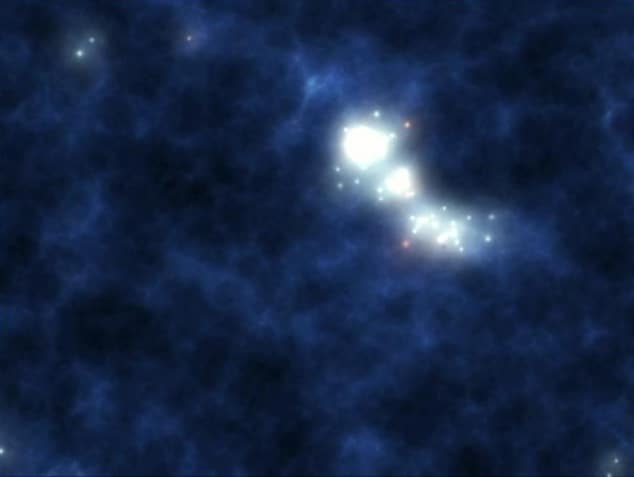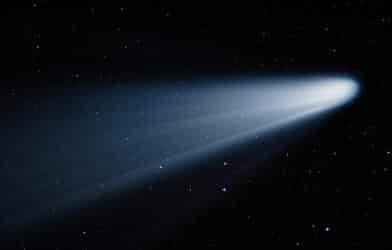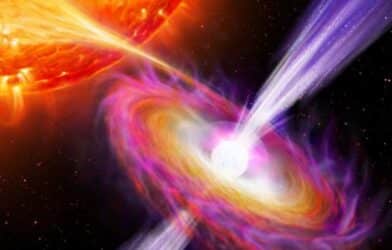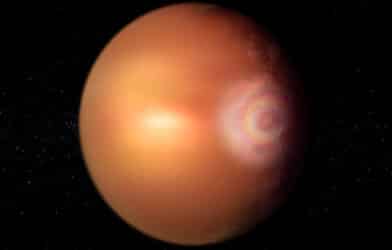
Astronomers will soon be able to “peer” at stars from the beginning of time. Researchers from the University of Cambridge developed a new method that will allow them to observe and study the first stars through the clouds of hydrogen that consumed the universe about 378,000 years after the Big Bang.
The team’s methodology will avoid the detrimental effect of the distortions introduced by the radio telescope. Researchers say their process, part of the Radio Experiment for the Analysis of Cosmic Hydrogen (REACH) experiment, will allow astronomers to observe the earliest stars through their interaction with the hydrogen clouds.
REACH’s first observations are expected later this year. The antenna will be located at the Karoo radio reserve in South Africa.
“At the time when the first stars formed, the universe was mostly empty and composed mostly of hydrogen and helium,” says study lead author Dr. Eloy de Lera Acedo, of Cambridge’s Cavendish Laboratory, in a statement. “Because of gravity, the elements eventually came together and the conditions were right for nuclear fusion, which is what formed the first stars. But they were surrounded by clouds of so-called hydrogen, which absorb light really well, so it’s hard to detect or observe the light behind the clouds directly.”

A separate research group published in 2018 a possible detection of this earliest light, but astronomers haven’t been able to repeat the result. Many are beginning to believe that the original result may have been due to interference from the telescope being used.
“The original result would require new physics to explain it, due to the temperature of the hydrogen gas, which should be much cooler than our current understanding of the universe would allow. Alternatively, an unexplained higher temperature of the background radiation — typically assumed to be the well-known Cosmic Microwave Background — could be the cause,” explains Dr. de Lera Acedo. “If we can confirm that the signal found in that earlier experiment really was from the first stars, the implications would be huge.”
To study the Cosmic Dawn, astronomers analyzed the 21-centimeter line, which is an electromagnetic radiation signature from hydrogen in the early universe. They searched for a radio signal that measures the contrast between the radiation from the hydrogen and the radiation behind the hydrogen fog.
The research team’s new methodology uses Bayesian statistics to detect a cosmological signal in the presence of interference from the telescope and general noise from the sky, so that the signals can be separated. To do this, researchers used simulations to imitate a real observation using multiple antennas. Previous observations relied only on a single antenna.
“Our method jointly analyses data from multiple antennas and across a wider frequency band than equivalent current instruments. This approach will give us the necessary information for our Bayesian data analysis,” says Dr. de Lera Acedo. “In essence, we forgot about traditional design strategies and instead focused on designing a telescope suited to the way we plan to analyze the data — something like an inverse design. This could help us measure things from the Cosmic Dawn and into the epoch of reionization, when hydrogen in the universe was reionized.”
The Karoo radio reserve is hosting the antenna because of its excellent conditions for radio observations of the sky. It is quite far away from radio frequency interference from television and FM radio signals.
“Although the antenna technology used for this instrument is rather simple, the harsh and remote deployment environment, and the strict tolerances required in the manufacturing, make this a very challenging project to work on,” says Dirk de Villiers, co-lead of the project at the University of Stellenbosch in South Africa. “We are extremely excited to see how well the system will perform, and have full confidence we’ll make that elusive detection.”
The study is published in the journal Nature Astronomy.








-392x250.png)



